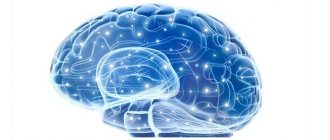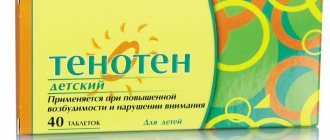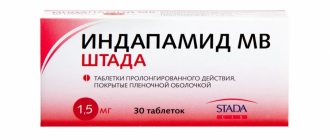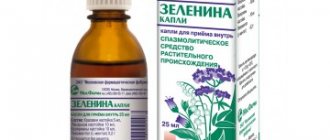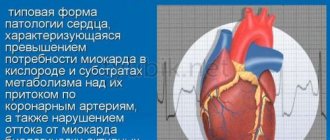Bellataminal®
Bellataminal® is a combination drug. It has α-adrenergic blocking, m-anticholinergic and sedative effects, and has antispasmodic properties. The drug reduces the excitability of the central and peripheral adrenergic and cholinergic systems of the body, has a calming effect on the central nervous system (CNS), and has some antispasmodic effects.
The pharmacological properties of the drug are determined by the action of the components included in its composition.
Belladonna sum of alkaloids
(alkaloids of the atropine group) has an m-anticholinergic and antispasmodic effect. Interferes with the stimulating effect of acetylcholine; reduces the secretion of the salivary, gastric, bronchial, lacrimal, sweat glands, and the exocrine function of the pancreas. Reduces the tone of the muscles of the gastrointestinal tract, bile ducts and gallbladder, but increases the tone of the sphincters; causes tachycardia, improves atrioventricular conduction. Dilates the pupils, impedes the outflow of intraocular fluid, increases intraocular pressure, causes paralysis of accommodation, etc.
Phenobarbital
belongs to the group of barbiturates. It interacts with the barbiturate portion of the benzodiazepine-γ-aminobutyric acid receptor complex, thereby increasing the sensitivity of γ-aminobutyric acid receptors to γ-aminobutyric acid, leading to the opening of neuronal channels for chloride ions, which leads to an increase in their entry into the cell.
Suppresses the sensory zones of the cerebral cortex, reduces motor activity, and inhibits cerebral functions, including the respiratory center. Reduces the tone of the smooth muscles of the gastrointestinal tract. Has a sedative effect.
Ergotamine
- ergot alkaloid. Affects various organs and systems of the body, incl. on the central nervous system; increases the tone of the uterus. It has been established that ergotamine is characterized by α-adrenergic blocking activity in combination with a pronounced direct vasoconstrictor effect on the smooth muscles of peripheral and cerebral vessels. In this regard, against the background of the action of ergotamine, despite its α-adrenergic blocking activity, the tonic effect on peripheral vessels and cerebral vessels predominates. It has a direct stimulating effect on the smooth muscles of the vessels of the skull, causing their constriction due to binding to 5-HT1-serotonin receptors, which leads to their activation.
Bellataminal
Bellataminal (belladonna alkaloids + ergotamine tartrate + phenobarbital) is a combination drug that combines the properties of an alpha-blocker, an m-anticholinergic blocker and a sedative. The list of indications for taking bellataminal has a wide therapeutic range: from increased irritability and sleep disorders to skin diseases and menstrual disorders. The drug has proven itself in the relief of post-concussion syndrome (PCS), a pathological condition that occurs in people who have suffered a traumatic brain injury. Headaches, vertigo, memory and attention disorders, depressive and anxiety states are quite common post-traumatic phenomena. As a rule, brain functions are restored within 2-3 months and the above symptoms disappear. However, in some cases, signs of ACL persist for a longer time. As some sources indicate, manifestations of ACL six months after a mild traumatic brain injury occur in 15–30% of patients. The optimal treatment strategy for patients with ACL is still a matter of debate. Clinicians are in a very difficult situation: on the one hand, they need to eliminate the cognitive, affective and autonomic symptoms of PCS, on the other hand, they need to avoid oversaturating the patient with sedatives that depress cognitive functions. In this regard, the domestic drug bellataminal is of particular interest. Russian scientists conducted a study of its effectiveness in patients with ACL. The study assessed the effect of the drug on the severity of the main symptoms of PCS and its safety. Two groups of patients were formed: participants in one of them took bellataminal 1 tablet 3 times a day for 30 days, participants in the other formed a control group. The severity of clinical and subjective symptoms was assessed using a specially developed scale before and at the end of pharmacotherapy. By the end of the 1st month of treatment, a statistically significant decrease in the severity of ACL symptoms was recorded in the experimental group compared to the initial level.
Compared with the control group, patients taking the drug had lower rates of headache, vertigo, nausea, sensitivity to light, emotional instability and irritability. Thus, in the experimental group, improvement was noted more often than in the control group, and a pronounced regression of symptoms due to bellataminal was observed twice as often as in the comparison group. In addition, the drug showed good results in terms of safety for patients: minor side effects such as dry mouth, drowsiness, lethargy and headache were observed in only 7% of patients. However, in none of the cases was it necessary to discontinue bellataminal.
The drug can also be effective in the treatment of dermatological diseases. Previously, bellataminal was quite actively used to reduce psycho-emotional overload in atopic dermatitis, dyshidrotic eczema, and itchy dermatoses. In recent years, due to global warming, the problem of treating prickly heat has become particularly relevant. Considering the presence of sedative and m-cholinergic effects in bellataminal, clinicians have proposed this drug as a means of direct and indirect reduction of excessive sweating. A study conducted at the Department of Dermatovenereology and Cosmetology of the Institute of Pedagogy of the Federal Medical and Biological Agency of Russia confirmed the effectiveness of bellataminal in the complex treatment of prickly heat.
Bellataminal is available in tablets. The drug is taken 1 tablet 2-3 times a day after meals. The duration of the drug course varies from 2 to 4 weeks with the possibility of a second course after agreeing on this issue with the attending physician. Bellataminal contains potent components, so it is not superfluous to know the symptoms of a drug overdose: lethargy, tachycardia, impaired accommodation, lack of normal intestinal tone, convulsions. The action of bellataminal is potentiated by nicotine, alpha and beta adrenergic agonists.
Bellataminal tablets No. 30
Compound
Active ingredients: belladonna alkaloids - 100 mcg, ergotamine tartrate - 300 mcg, phenobarbital - 20 mg. Excipients: sucrose, potato starch, povidone (polyvinylpyrrolidone), calcium stearate.
Pharmacokinetics
Pharmacokinetic studies of the combination drug have not been conducted.
Belladonna, the sum of alkaloids, contains a complex of biologically active substances, and therefore pharmacokinetic studies are not possible.
When taken orally, phenobarbital is completely, but relatively slowly, absorbed. The maximum concentration in the blood is observed 1-2 hours after administration. About 50% binds to plasma proteins. Phenobarbital is evenly distributed in different organs and tissues; lower concentrations are found in brain tissue.
Metabolized in the liver, induces microsomal liver enzymes: isoenzymes CYP3A4, CYP3A5, CYP3A7 (the rate of enzymatic reactions increases 10-12 times), increases the detoxification function of the liver.
Cumulates in the body. The half-life (T1/2) is 2-4 days.
It is excreted by the kidneys in the form of glucuronide, 25% unchanged. Penetrates well into breast milk and across the placental barrier.
Ergotamine after oral administration is slightly absorbed from the gastrointestinal tract. Bioavailability is low due to intensive metabolism during the “first pass” through the liver. The maximum concentration of ergotamine in the blood plasma is achieved 50-70 minutes after oral administration, 90% of ergotamine is metabolized in the liver. T1/2 is 2 hours. The main metabolites (some of them are active) are excreted in the bile. About 4% is excreted unchanged by the kidneys.
Indications for use
- increased irritability;
- insomnia;
- neurogenic disorders of the menstrual cycle;
- neurodermatitis (to relieve itching);
- vegetative-vascular dystonia (as part of complex therapy).
Contraindications
- angina pectoris and other severe manifestations of atherosclerosis;
- spasm of peripheral arteries;
- angle-closure glaucoma;
- pregnancy;
- breast-feeding;
- childbirth;
- age under 18 years;
- hypersensitivity to the components of the drug.
Directions for use and doses
Orally, 1 tablet 2-3 times a day after meals. The duration of use of the drug is from 2 to 4 weeks. Repeated courses of treatment are possible after consultation with a doctor.
Storage conditions
The drug should be stored in a dry place, out of reach of children, at a temperature not exceeding 25°C.
Best before date
5 years. Do not use after the expiration date.
special instructions
The drug should not be used for more than 4 weeks without a doctor’s recommendation due to the risk of developing drug dependence on phenobarbital.
Description
A drug with sedative and antispasmodic effects.
Dosage form
The tablets are light yellow, biconvex, film-coated.
Use in children
Contraindicated for people under 18 years of age.
Pharmacodynamics
Bellataminal® is a combination drug. It has α-adrenergic blocking, m-anticholinergic and sedative effects, and has antispasmodic properties. The drug reduces the excitability of the central and peripheral adrenergic and cholinergic systems of the body, has a calming effect on the central nervous system (CNS), and has some antispasmodic effects.
The pharmacological properties of the drug are determined by the action of the components included in its composition.
Belladonna sum of alkaloids
(alkaloids of the atropine group) has an m-anticholinergic and antispasmodic effect. Interferes with the stimulating effect of acetylcholine; reduces the secretion of the salivary, gastric, bronchial, lacrimal, sweat glands, and the exocrine function of the pancreas. Reduces the tone of the muscles of the gastrointestinal tract, bile ducts and gallbladder, but increases the tone of the sphincters; causes tachycardia, improves atrioventricular conduction. Dilates the pupils, impedes the outflow of intraocular fluid, increases intraocular pressure, causes paralysis of accommodation, etc.
Phenobarbital
belongs to the group of barbiturates. It interacts with the barbiturate portion of the benzodiazepine-γ-aminobutyric acid receptor complex, thereby increasing the sensitivity of γ-aminobutyric acid receptors to γ-aminobutyric acid, leading to the opening of neuronal channels for chloride ions, which leads to an increase in their entry into the cell.
Suppresses the sensory zones of the cerebral cortex, reduces motor activity, and inhibits cerebral functions, including the respiratory center. Reduces the tone of the smooth muscles of the gastrointestinal tract. Has a sedative effect.
Ergotamine
- ergot alkaloid. Affects various organs and systems of the body, incl. on the central nervous system; increases the tone of the uterus. It has been established that ergotamine is characterized by α-adrenergic blocking activity in combination with a pronounced direct vasoconstrictor effect on the smooth muscles of peripheral and cerebral vessels. In this regard, against the background of the action of ergotamine, despite its α-adrenergic blocking activity, the tonic effect on peripheral vessels and cerebral vessels predominates. It has a direct stimulating effect on the smooth muscles of the vessels of the skull, causing their constriction due to binding to 5-HT1-serotonin receptors, which leads to their activation.
Side effects
Possible: allergic reactions, dry mouth, drowsiness, accommodation paresis.
Use during pregnancy and breastfeeding
The use of the drug is contraindicated during pregnancy and breastfeeding.
Interaction
The effect of the drug is enhanced by alpha and beta adrenergic agonists and nicotine.
Overdose
Symptoms: dizziness, lethargy, drowsiness, tachycardia, dilated pupils, impaired accommodation, difficulty urinating, intestinal atony, convulsions, in severe cases - stupor, coma.
Treatment: gastric lavage, taking activated charcoal, carrying out symptomatic therapy.
Release form
Film-coated tablets, No. 30.
Impact on the ability to drive vehicles and operate machinery
During the treatment period, care must be taken when driving vehicles and engaging in other potentially hazardous activities that require increased concentration, speed of psychomotor reactions and good vision.

